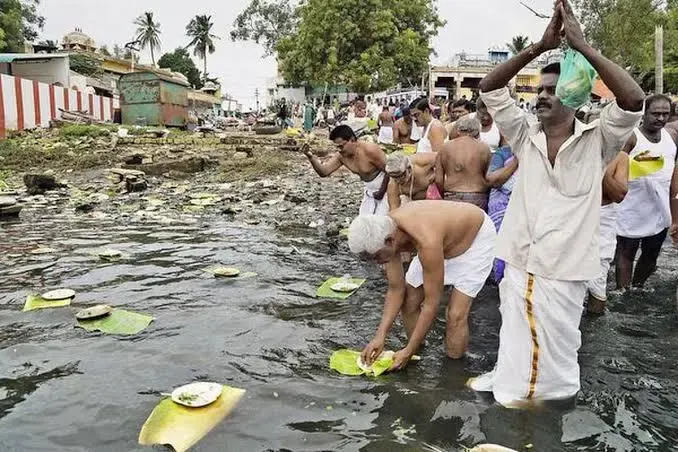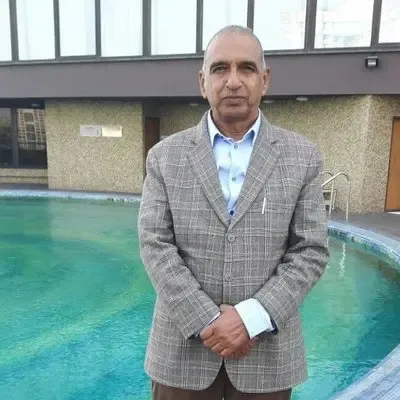Why Do Devotees Gather at the Cauvery River for Aadi Amavasya?

Synopsis
Key Takeaways
- Thousands of devotees gather annually for Aadi Amavasya.
- The day is dedicated to honoring ancestors.
- Key pilgrimage sites include Bhavani Kooduthurai and Kodumudi.
- Local authorities ensure safety measures during the event.
- Cultural traditions are deeply rooted in the Tamil community.
Chennai, July 24 (NationPress) On Thursday, thousands of devotees from Tamil Nadu and surrounding regions gathered along the banks of the Cauvery River to celebrate Aadi Amavasya, a significant day for honoring ancestors. Traditional ceremonies were conducted at renowned pilgrimage sites like Bhavani Kooduthurai, Kodumudi, and Karungalpalayam in Erode district.
The sacred bath in the Cauvery, particularly at confluence spots such as Bhavani Kooduthurai near the Sangameswarar Temple, is deemed exceptionally auspicious on this day.
Devotees started arriving early, resulting in considerable traffic congestion around the temple area.
Special measures were implemented to handle the large crowd, as individuals performed rituals and made pinda daan offerings along the riverbanks to honor their ancestors.
Bhavani Kooduthurai, recognized for its spiritual importance due to the merging of the Bhavani, Cauvery, and the mystical Amudha rivers, experienced the highest attendance.
Throughout the day, priests and temple volunteers assisted devotees in carrying out the rites.
Amid the chanting of mantras and ceremonial prayers, families lit lamps and floated offerings in the river. Similar scenes were observed at the Kodumudi Sangameswarar Temple, where hundreds gathered for sacred bathing and ancestral ceremonies.
This temple, situated on the banks of the Cauvery, is a traditional focal point for Aadi Amavasya observances.
Local authorities collaborated with temple management to regulate the flow of devotees and ensure safety measures were enforced.
In Erode city, the Karungalpalayam bathing ghat saw a continuous stream of worshippers throughout the day.
Devotees lined up for a chance to reach the river, where rituals were performed under the guidance of local priests.
Officials reported that the Cauvery was discharging 18,000 cusecs on Thursday, prompting temple and district authorities to issue safety advisories.
Banners and volunteers cautioned visitors against venturing into deeper areas of the river and emphasized the importance of supervising children during the holy dip.
Despite the significant turnout, the event proceeded peacefully, with local police and civic officials present to maintain order and assist attendees.
The enduring tradition of honoring ancestors on Aadi Amavasya continues to attract millions annually, showcasing the profound spiritual and cultural heritage of the Tamil community.









